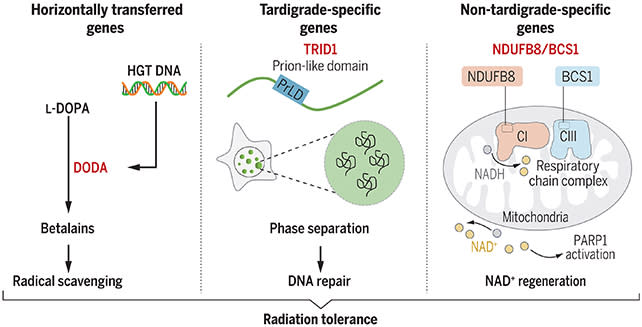Researchers studied a newly discovered species of tardigrade called Hypsibius henanensis. Tardigrades are known to be extremely resistant to radiation.
By analyzing the tardigrade’s genome, they found over 14,000 protein-coding genes, with over 4,400 being unique to tardigrades.
Exposing the tardigrades to radiation allowed the researchers to see how gene expression and protein production changed, revealing mechanisms for radiation tolerance.
A gene called DODA1 was found to produce pigments that help neutralize harmful molecules from radiation. DNA repair also occurred much faster thanks to a protein called TRID1.

Two other proteins, BCS1 and NDUFB8, increased production to help with energy supply during radiation exposure.
These three processes – pigment production, fast DNA repair, and energy supply – contribute to the tardigrade’s remarkable radiation tolerance.
The study provided more insights into the molecular level workings of how tardigrades can withstand radiation, though more research is needed on generalizing these findings across other tardigrade species.
Source: Science Alert









